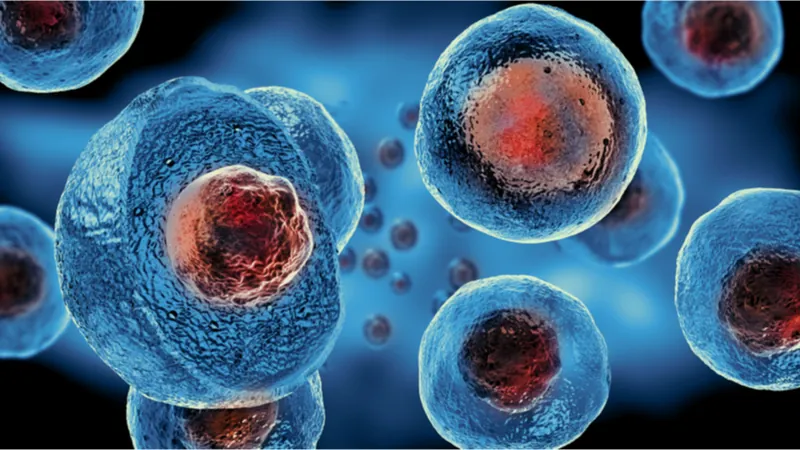Posted 07 April 2025 - 04:00 PM
A new paper published in the Nature journal Bone Research has found that reprogramming the epigenetics of spinal disc cells reduces senescence and alleviates pain in a rat model.
The soft tissue degrades
Nucleus pulposus cells, which maintain the discs in the spine [1], are prone to the same age-related deterioration that other cells are. They become senescent, losing the ability to renew themselves [2], and they fail to perform their fundamental functions of extracellular matrix maintenance, thus leading to disc shrinkage and many of the back problems that people experience as they age.
We have reported on studies in this space, including a recent study that focused on targeting a specific pathway to fight senescence and restore function. These researchers, however, took an entirely different approach, using epigenetic reprogramming in an attempt to restore these cells to a youthful state.
These researchers chose a combination of the first three factors, OSK, for this experiment; c-Myc, the M in OSKM, is often omitted because it has been linked to cancer.
One of the key difficulties that they noted in these reprogramming experiments is in simply delivering the necessary factors to cells; using virus-related vectors has been found to be more difficult than expected at the clinical level [3]. Therefore, these researchers chose exosomes, intercellular signaling molecules that researchers frequently derive from youthful cells in order to benefit older tissues [4]. Instead of simply containing the common signals sent by youthful cells; however, they contained a plasmid that codes for OSK.
An engineered exosome seems to bear fruit
These exosomes went through a carefully designed process. They originated from bone marrow stem cells that had their exosomes modified with Cavin2, a protein that enhances the ability of these vesicles to be taken up into other cells. These exosomes were then filled with the OSK plasmid.
In the first experiment, the researchers verified that their OSK plasmid would benefit nucleus pulposus cells as it does other cells. Directly giving the cells plasmids did indeed encourage the production of OSK within the cells, and this led to downregulation of the senescence-related p53 tumor suppressor pathway along with a decrease in DNA damage as measured by the marker γH2AX. With aging, the epigenetic methylation marker H4K20me3 increases while the related marker H3K9me3 decreases; with the OSK plasmid, this was reversed in these cells. There were also benefits for the nuclear envelope, which maintains the cellular nucleus’ structure.
OSK also restored these cells’ fundamental abilities. Compared to a control group of untreated aging cells, markers of proliferation were increased, and critically, it also decreased markers of tissue destruction (anabolism) while increasing markers of tissue creation (catabolism). This is particularly promising, as it suggests that these cells are better able to maintain vertebral discs. There was also a reduction in inflammatory biomarkers.
The researchers then tested the effectiveness of their Cavin2 exosome modification. This change didn’t benefit its ability to enter into young cells; instead, it helped it enter older cells, which, as these researchers found, accept fewer unmodified exosomes than younger cells do. This is because Cavin2 encourages phagocytosis: the ability of cells to consume material near to them.
These modified exosomes were found to have even stronger effects than the initial way in which they had delivered OSK plasmids into the cells. Senescence biomarkers were even further reduced, DNA damage was also reduced, and there was more H3K9me3 than in the original OSK group as well. Inflammatory biomarkers were even more strongly reduced, and there were positive effects on the maintenance-related anabolism/catabolism balance.
Complete restoration in a rat model
Encouraged by these results, the researchers then turned to a rat model. Puncturing rats’ vertebral discs with a needle leads to intervertebral disc degeneration and many of the same problems seen in older people, including both pain and cellular senescence. Two weeks after this injury, the rats were given one of a variety of injections into the nucleus pulposus, including unmodified exosomes, OKS plasmids, and their modified plasmids, along with a sham-injured group and an untreated control group.
Neither unmodified exosomes nor OSK plasmids reached statistical significance on key metrics, including visual analysis of disk degeneration. It appeare that these two treatments may have helped somewhat, particularly eight weeks after treatment, when the severity of their disc degeneration was judged to be lower.
On the other hand, rats treated with Cavin2-modified, OSK-containing exosomes had immediate benefits only four weeks after injection. Looking at disc morphology, there were practically no differences between this group and the sham-injured group at all; it was if they had never been injured in the first place.
RNA sequencing suggested an anti-aging effect. In an examination of genes whose expressions change with aging, rats injected with these exosomes were found to have many of the modifications found in the cellular studies, including a decrease in the p53 pathway and in other pathways related to cellular senescence, compared to the untreated control group.
While this research is promising, it is still in its early stages and needs verification. These were not naturally aged rats, and there may be unforeseen problems with delivering these sorts of exosomes to humans. Still, this work warrants further investigation to determine if these modified exosomes can indeed be a vector for effective epigenetic reprogramming therapies in nucleus pulposus cells or other tissues.
We would like to ask you a small favor. We are a non-profit foundation, and unlike some other organizations, we have no shareholders and no products to sell you. All our news and educational content is free for everyone to read, but it does mean that we rely on the help of people like you. Every contribution, no matter if it’s big or small, supports independent journalism and sustains our future.
Literature
[1] Fine, N., Lively, S., Séguin, C. A., Perruccio, A. V., Kapoor, M., & Rampersaud, R. (2023). Intervertebral disc degeneration and osteoarthritis: a common molecular disease spectrum. Nature Reviews Rheumatology, 19(3), 136-152.
[2] Roberts, S., Evans, E. H., Kletsas, D., Jaffray, D. C., & Eisenstein, S. M. (2006). Senescence in human intervertebral discs. European Spine Journal, 15, 312-316.
[3] Pan, X., Veroniaina, H., Su, N., Sha, K., Jiang, F., Wu, Z., & Qi, X. (2021). Applications and developments of gene therapy drug delivery systems for genetic diseases. Asian journal of pharmaceutical sciences, 16(6), 687-703.
[4] Möller, A., & Lobb, R. J. (2020). The evolving translational potential of small extracellular vesicles in cancer. Nature Reviews Cancer, 20(12), 697-709.
View the article at lifespan.io









































